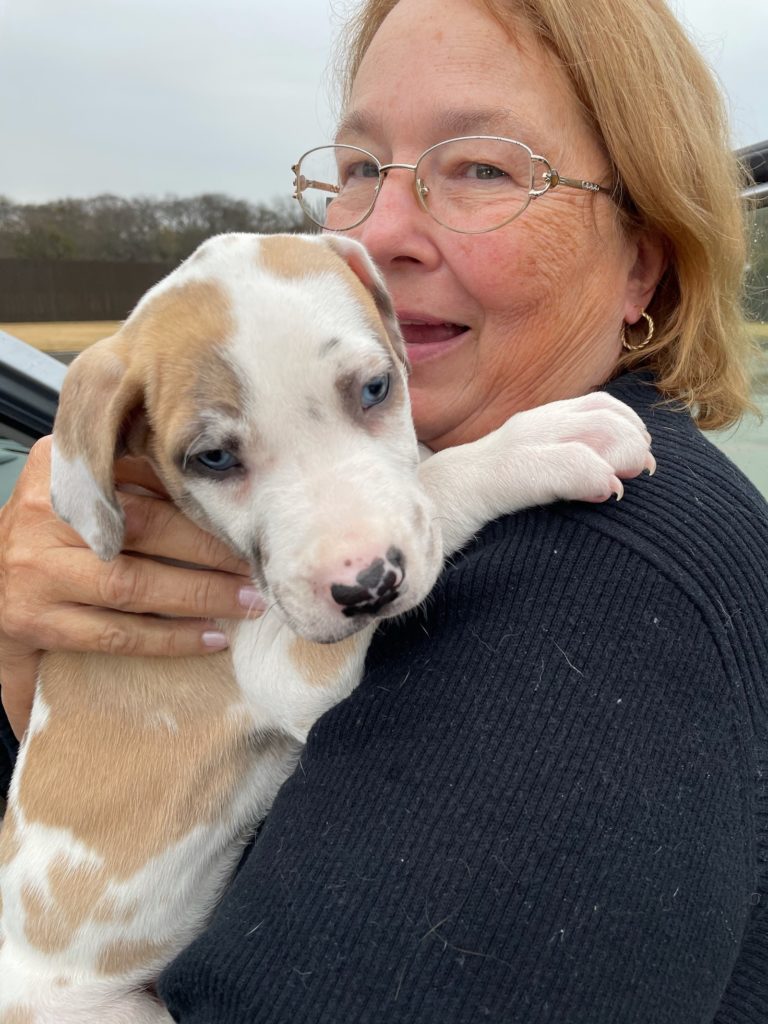Welcome to the Life of a “Dog Transporter”
Mary Kay Tennant, a long-time Northwood resident, has a different kind of retirement plan. She spends her days rescuing pups from terrible circumstances to drive them across the country to a loving home.
“I was not doing anything, and a friend who got me into fostering asked me to transport some dogs, to keep them from being euthanized,” says Tennant.
Other rescue groups heard about Mrs. Tennant, and her phone started ringing off of the wall.
“Sometimes I am paid, but it is basically gas, meals, and expenses.” She transports dogs around Texas, but the evening that we talked, she was preparing to go to Buffalo, New York—where the temperature was in the 20s.
“I have to transport 30 puppies, and with another driver, we will drive four hours on and four hours off. Now, by myself, I’ve driven all the way to Indiana, and most recently, I did a trip to Mississippi in a day.”
After checking in at home, it was off to Memphis, Tennessee, to deliver nine dogs.
“Somebody says: Let’s go somewhere. I say: How far? I am ready.”
This volunteer job means going in all directions at once!
A widow with two married daughters, her time is her own, so the intrepid 70-year-old rolls onto another off-the-beaten-path to collect more abandoned pups. Before they’re even loaded, here comes another email or voicemail, with instructions for her next run.
“It is all different rescues, from Canada, from Michigan, New York, Connecticut, from right here in San Antonio.”
Grants, foundations, and philanthropists fund many operations.
“Since there is such a stray problem in San Antonio and the valley, a lot of dogs would be euthanized if rescues did not pick them up.”
But in northern states, stray dogs are rare and, therefore, precious. “I have one lady in Connecticut who cannot get enough dogs. We just transported ten to her on Wednesday. They have no difficulty having them adopted them out.”
Why does Texas have a problem and Connecticut does not?
“People here don’t have money for spay and neuter, or they breed them.”
Quarantine is the first order of business to ensure that the animals don’t have distemper or another transmittable disease.
“Many of them are very scared because all they have known is street life or shelter life. Some are older dogs that owners have surrendered. They get a new puppy, and they get rid of the old.”
Ageism is a problem in my world too.
It’s become prevalent to transport pets.
Some transporters are big operations, with trailers or vans to ferry 50 to 60 homeless hounds.
Some programs fly dogs to their new owner, courtesy of volunteer pilots.
Mary Kay does pick-ups and deliveries about five days a week, but most of her trips are just half a day or so, which still allows her to foster.
“The foster dog I had recently had seizures and needed medicine three times a day, once at midnight. No one is in the kennel then.”
True dedication!
“It fills me with happiness because many dogs won’t be euthanized and will have found a home to lead a happy life the rest of their days. Sometimes, they come to give me a lick, telling me that they are glad for me to be there.”
Until next month!
Woof, woof
Roxie
By Berit Mason









